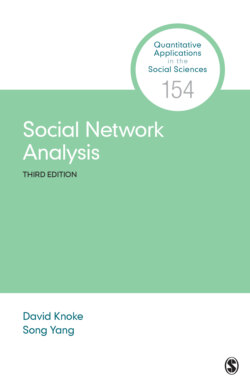Читать книгу Social Network Analysis - Song Yang - Страница 11
На сайте Литреса книга снята с продажи.
Chapter 2 Network Fundamentals
ОглавлениеIn this chapter, we discuss fundamental concepts for understanding social network analysis methods. We use terms and definitions most widespread and accepted by academic researchers but in instances of disagreement defer to sociological perspectives. We cite many examples from diverse disciplines that illustrate these basic concepts. Interested readers should read numerous publications to deepen their understanding of how network analysis methods can be applied to investigate substantive problems in their fields.
To clarify the distinctive social network perspective on social action, a contrast to individualistic, variable-based approaches may be insightful. Many social science theories, possibly a large majority, assume that actors make decisions and act without regard to the behavior of other actors. Whether analyzed as utility-maximizing rational calculations or as drive-reduction motivation based on causal antecedents, such explanations primarily consider only the characteristics of persons while ignoring the broader interaction contexts within which social actors are embedded. In contrast, network analysis explicitly assumes that actors participate in social systems connecting them to other actors and that their relations comprise important influences on one another’s behaviors. Central to the theoretical and methodological agenda of network analysis is identifying, measuring, and testing hypotheses about the structural forms and substantive contents of relations among actors. This distinctive structural-relational emphasis sets social network analysis apart from the individualistic, variable-centric traditions still prevalent in much social science theory and research. We see encouraging signs that many social science disciplines are increasingly embracing structural-relational explanations of social action.
